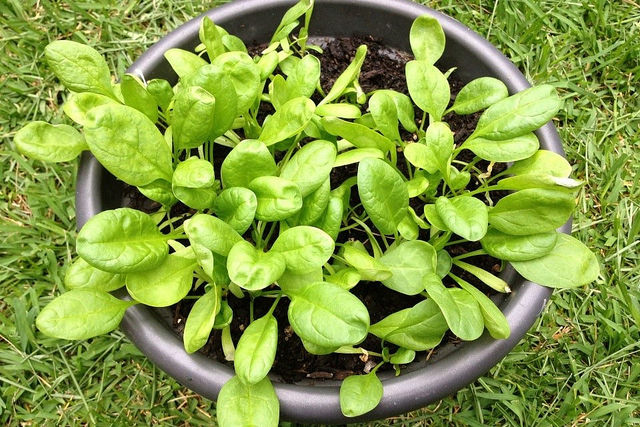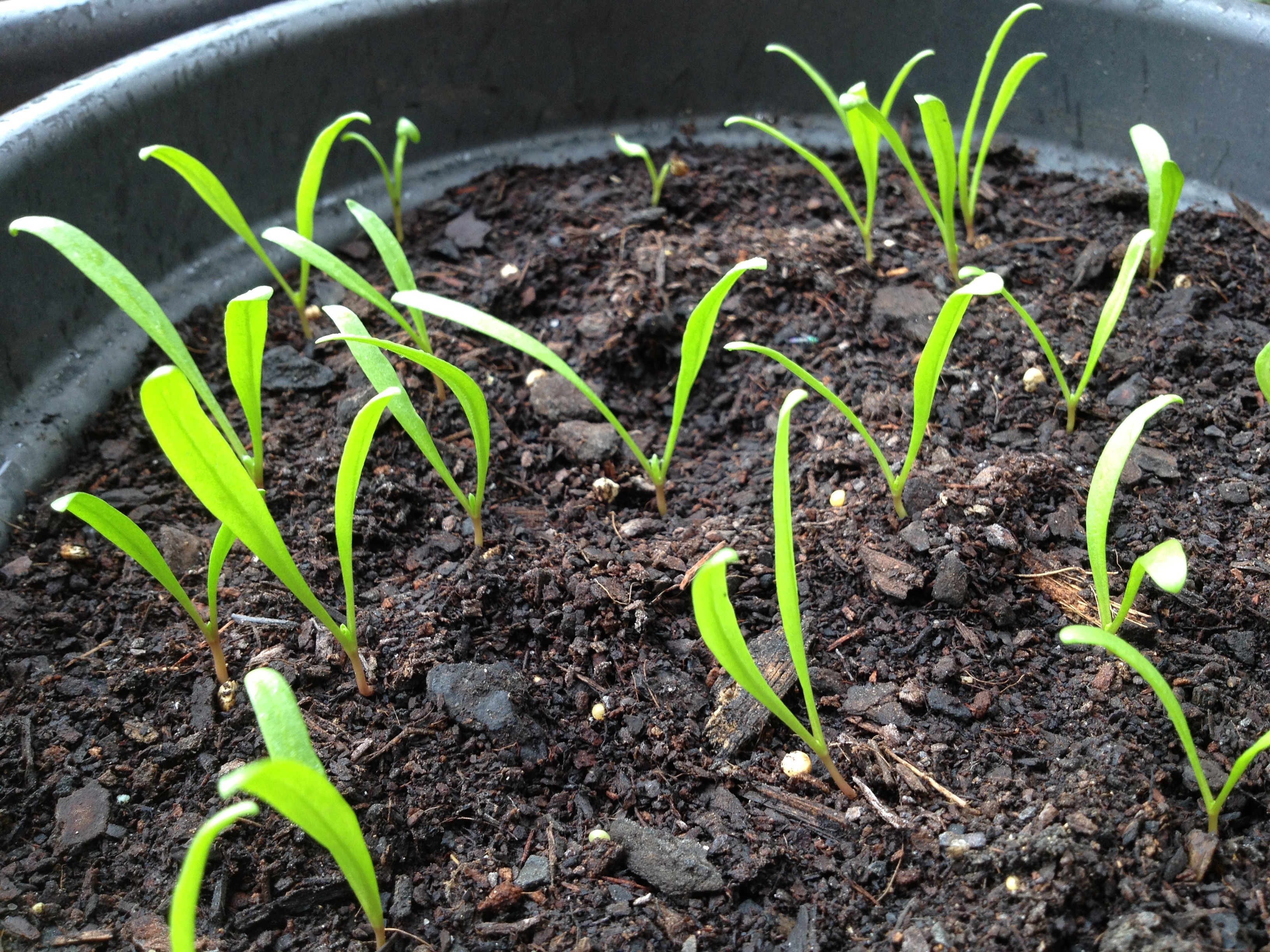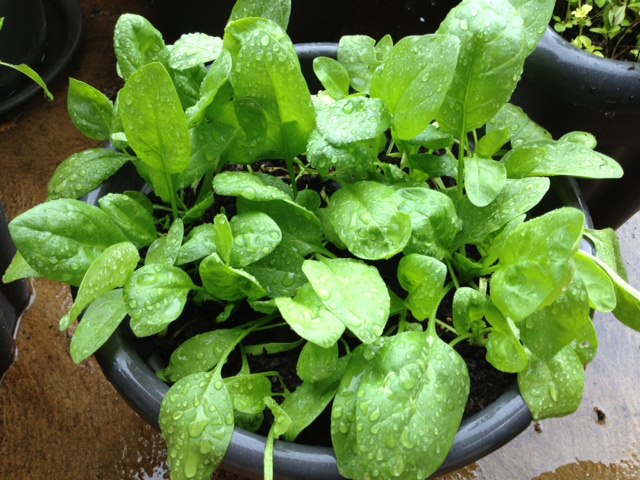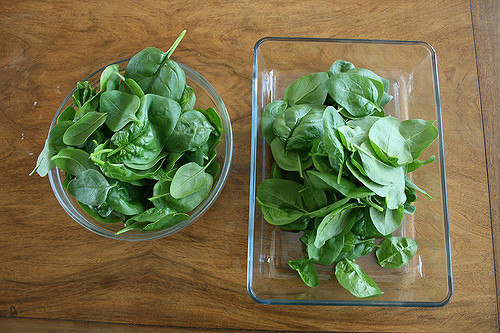
Growing your own vegetables at home is one of the most enjoyable ways to reduce your carbon footprint. By doing so your household can connect to what’s in season, reduce food waste and avoid food miles.
After you have tasted your home-grown baby spinach, you’ll never be tempted by chlorine washed, plastic packaged spinach gain. Home-grown baby spinach has a sweeter, nuttier flavour and a crunchier texture.
It’s easy to grow and you can harvest the leaves as you need them so you’ll always have fresh salad greens at hand. Your plants will keep producing leaves for several weeks and by succession planting you can have a continual supply.
I’ve been growing baby spinach for many years now and I’m not sure why it’s not more popular. It’s perfect for adding some extra greens to your lunches or for munching on while out in the garden.
Silverbeet vs spinach
Spinach and silverbeet often get confused. They are from the same family of plants (chenopodiaceae) but have a different texture and taste.
Position
Your spinach will enjoy full-sun to part-shade, but it’s best to provide some shade while the weather is still hot. I usually grow mine in containers. Spinach like cooler weather: 10-25 degrees Celcius is ideal.

Growing Tips
Sow seeds around 1 cm deep directly to where you want them to grow, water gently, keep moist during the germination period then thin out as necessary. I’ve found I can get away with planting them fairly close together in a container if I feed and water them well.
Seedlings will generally emerge within 14 days. Succession plant every 2-3 weeks for an ongoing supply. It’s important to keep plants well watered because they will bolt to seed if they dry out. Also, watch out for slugs and snails that love to munch on the leaves.
Varieties
There are a number of different varieties to look out for at your local nursery or through online seed companies.
- Medania: Thick round leaves and a heavy cropper. Plant autumn and winter.
- Viking: Dark green leaves, quick maturing with a superb taste. Plant late summer to winter.
- Hector: High yielding with resistance to bolting and tolerance to mildew. Plant autumn and winter.
- Lazio: Rounded, dark, smooth leaves. Plant autumn and winter.
- Viroflay: A French heirloom variety with smooth dark leaves. Plant autumn and winter.
- Giant noble: smooth and thick dark green leaves
Where can I buy seeds?
Visit to your local nursery or see my resources page for a list of potential seed companies you can order from online. Try to buy organic seeds that have been grown in Australia. Another option is to join a local savers group.
Harvesting
Pick leaves as needed and take time to enjoy your harvest. Consider sharing the garden love by growing some extra plants to share with friends and family!
What’s your favourite spinach to grow as a baby green?



Good article & excellent way to articulate. Keep it up.
fantastic put up, very informative. I’m wondering why the opposite specialists of
this sector don’t realize this. You must proceed your writing.
I’m sure, you have a great readers’ base already!
I’ve read some just right stuff here. Definitely value bookmarking for
revisiting. I surprise how a lot effort you put to make this kind of wonderful
informative site.
Hi .by mistake I have sowed spinach seed in a very small disposable tray.i can see the baby leaves germinated.but I read some where spinach should be directly sown and cannot be transplanted.
Pls advise if I can transplant it to a bigger pot with baby leaves
Hi Krithi, you can move your spinach plants but try to not disturb the roots too much when you move them and retain as many roots possible on each plant. If your’s are small and you are gentle then I don’t think you will have any problems. Just focus on getting healthy root structures and don’t worry if you can’t save every plant. To transplant or pot-on small plants I often use an old tea spoon (specicific for gardening use) and a chopstick. I sometimes transplant extra spinach plants I have myself and it has been fine. Let us know how you go. And email me if you’d like more specific advice 🙂
That’s interesting to read. I recently bought a punnet of spinach seedlings from my local hardware/gardening store. When I tried to separate and plant them out I realised I’d made a mistake as the roots were very weak and the soil basically fell away. For a few days they appeared wilted and dead, but with plenty of water and care they have now come good and are growing new leaves so I think they’ll be OK. I hadn’t realised they’re so touchy to transplant when small. I also didn’t know they’re related to Chenopods (or saltbush). Thanks for the informative article.
When you buy in a container . place this in water a bucket to loosen soil over night with care seperate plants before planting and water in with seasol.
This should stop the wilting and produce healthier plants
That is a great tip particularly to those new to the blogosphere. Simple but very precise info… Thanks for sharing this one. A must read article!
Can I ask what Spinach plants are in your photos ? I have planted baby spinach a couple of times and mine are a thick wrinkly leaf. I’m wanting a smoother texture.
Hi Lyn, I was growing Virofly that year. Hope this helps 🙂 https://seedsofplenty.com.au/product/spinach-viroflay/
thanks for this article, I needed your positive approach today. Now on to gently transplanting spinach babies. Can I just seed next to them for the next batch?
Keep on writing, great job!
For slugs and snails, just sprinkle dried, broken eggs shells around your plants (you want them well shattered, but not crushed to powder). The creepy crawlies will touch the edge, which to them is razor sharp, and back off. You’ll have to check this daily or so to make sure nothing else is making a path through them, but I’ve found it works a treat.
For cabbage moths and other flying pests, you can make decoy butterflies out of an old plastic shopping bag, preferably the fine white kind. First cut a rough butterfly shape, as many as needed, tie it in the middle to some fine wire, coil the wire like a loose spring and secure one end to a stick; push the sticks into the ground, spaced out, and so your butterflies sit above your plants — and every little movement of breeze will make your butterfly jiggle and flap, which will deter others.